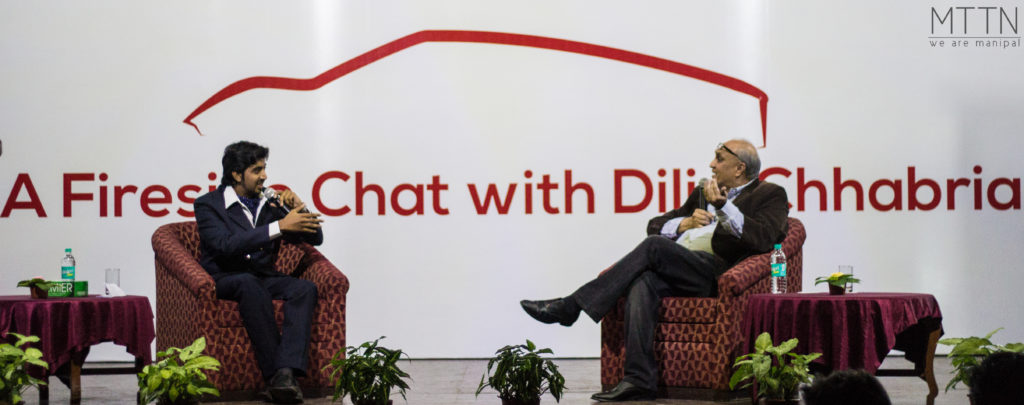
Car models are better than role models.
– Dilip Chabbria, DC Design
Loud as a roaring Avanti, the crowd erupted into cheers as Mr. Chhabria and his wife, Cherry, graced the auditorium with their presence. Organized by The Think Tank, A Fireside Chat with Dilip Chhabria was not just an informative insight into the mind of the innovator behind India’s first supercar, but it was also a humbling and inspiring perspective into how much work goes into design.
The Think Tank (TTT) is an MIT club that specializes in organizing talks with renowned and famous individuals to incite and inspire students. The event itself was very well organized, with various sections of the night running smoothly and on time.
The evening began with short speeches by MIT’s celebrated director G.K. Prabhu and Manipal University’s Vice-Chancellor, Dr. H. Vinod Bhat.
Contrary to the natural assumption made from a glance at one of the posters spread across campus, there was no fireplace! But in the perfectly apt words of Dr. Bhat,
“Though there is no fire, we have a spark. DC is the spark that kindles this fireside chat.”
After the introductory ceremony, the dais was rearranged to include only two chairs. Prof. Suhas Kaushik from MIT’s mechanical engineering department was welcomed on stage to interview and chat with DC. Before Mr. Chhabria sat down, however, he had a presentation set up to explain what exactly DC Design does and what their bedrock values are.
“We’re a paranoid organization.”
Earlier in the day, DC had been taken to see the several automobile clubs that are active in Manipal. When asked to comment on them, he said, “They’re exceedingly enthusiastic and need to be empowered. They’re definitely made of leadership material.”
As the talk went on, we got to know a little more about DC’s life as a school kid, as well his thought process growing up.
“I was a very shy kid. Almost painfully shy, too scared to even make a phone call. If someone knew me back then, they’d be hard pressed to recognize me now. I still have a small inferiority complex and I believe that this is a very good thing. This inferiority complex is what led me to be by myself and work on my projects. The genesis of who I am today lies in this fact. I used to draw very often and I was obsessively interested in cars. I’d draw on napkins, spare pieces of paper. Even walls.”
Mr. Chabria lightened the mood by dealing out some relationship advice. Despite not being very social in his teens, he spoke about his college girlfriend.
“She reinforced the inferiority complex within me by dumping me very fast. I thank her to this day. My advice is this – if you want to be successful, get dumped. Twenty-five years after that, she called me up. I instantly knew it was her because I recognized her voice, though we hadn’t been in touch ever since then. Turns out her son had become my fan. We got talking, one thing led to another and her daughter became my daughter-in-law.”
Did you have a role model as a kid?
“I’ve been asked this many times. To be honest, not really. I just always wanted to be surrounded by good cars. Car models are better than role models.”
How’d you end up doing a degree in Commerce when you have such passion for design?
“I didn’t know design as a career was even an option, and always thought cars were made by engineers. I didn’t know that there existed a realm called ‘design’ within engineering.”
I was definitely not expected to be an automotive entrepreneur.
How did you finally end up in design?
“I saw an ad in a car magazine that said ‘Do you want to be a car designer?’ I wrote to them and enrolled in their course. And that’s how I eventually ended up learning automotive design. The US system offers a lot of freedom. Their credit based system allows you to explore other things outside your curriculum.”
Why did you come back to India?
“I loved being around cars and my time in the US gave me that. But though that excited me, being a very shy person, I felt very reserved. I was never at the front line of things. Also, I was only designing small parts of the car. I wanted to design my own car, the whole thing. The problem was that I would have had to wait for 25-30 years before I got a senior position at the company, after which they would hand me a car project. I wasn’t willing to wait that long and so I flew back to India. I feel more comfortable here.”
How did your parents react?
“They always knew my heart wasn’t in my dad’s electronics component business. My parents were affluent enough to be able to afford my passions and my dad always believed in doing what you loved. I was lucky that way.”
When did the idea of becoming an entrepreneur strike you? Did you have this plan before coming to India or did it strike later?
“When I came back, I worked at my dad’s factory for almost two years. I was miserable. I’d go to work late and try to come back early. I’d fight with my dad. Sure, I was expected to be an entrepreneur, but I was definitely not expected to be an automotive entrepreneur.
I told dad that I wanted three people and a section of the factory to develop car accessories. I started making enough money every month to buy a flat in south Bombay. The first thing I made was a horn pad for a Fiat Padmini. It cost me 8 rupees and I sold it for 45 rupees. And I laughed my way to the bank.”
A car is a moving object. It’s like a moving billboard.
DC was so passionately obsessed with cars that he even named his children after them. Minica and Bonito Chhabria now run DC Design with their father.
“My son was very angry because Bonito is the name of a kit-car. But the fact that I named them what I did just shows my obsession for cars.”
Despite being a successful businessman for a car accessory business, the restlessness still existed to design a whole car. He started DC Design in 1993.
It had to sound Indian. It had to sound Italian. And it had to sound feminine. Aren’t all desirable things feminine?
“We became very popular within the first 2-3 years. A car is a moving object. It’s like a moving billboard. I’d park one of the cars at a restaurant and people would gather round, sometimes tucking their visiting cards into the windshield because they wanted to know where I got the car from.”
Was there a particular breakthrough moment? Or was it a very linear growth?
“Our growth has been mostly linear. It’s been a slow and constant process. However, it is the customizing of cars that gave us the visibility as a brand. And though there was no breakthrough moment as such, there have been milestones.”
What was it like working with Hollywood to design the Bond car?
“We never worked directly with the film. We worked with Aston Martin. It was a big day, I was live on all the important business news channels. I hadn’t just won this offer over the other companies around the world, I’d won the offer from Aston Martin. And that’s something that made us all very proud.”
Why ‘Avanti’?
“We’re an aesthetic family. We give importance to right-sounding names and shapes. The concept car had to debut at the Delhi motor show. It was initially called the Buddh. I was down with dengue in the hospital later and I realized the name Buddh is very Godly. It didn’t fit the car. I told my son this and he dreamed up the name Avanti. It was perfect because it had to sound Indian. It had to sound Italian as well. And it had to sound feminine.”
Have you faced any competition along the way?
“None. I wish there was some competition – the industry would grow faster. The fact is that very few people actually have the will to sacrifice a stable career. And the other thing is that there are a lot of wannabes and amateurs. They might do it 30% cheaper, but they might just destroy your asset. We’ve developed our credibility over the years. We’re not arrogant and we don’t rest on our laurels. We’re constantly working. And for another company to develop that level of credibility will take at least twenty years.”
What was the hardest part?
“You can’t measure the success of design in monetary terms, so it’s a sort of mumbo-jumbo science. I had to build a love for finance and marketing. I had to look at the numbers and excite myself. Even though I’m a creative guy, I had to do this.”
Can you make something cheaper for the common man? You’ve said yourself that you can’t afford to own the cars your company designs.
“It takes an incredible number of man-hours to design and build a car. The Avanti took 1.6 million man hours, but because they’re not exclusive units, the cost per unit is much less. Worldwide, any concept car costs around 30-40 crores. We do it at 1/5 to 1/6 the price. We are a private company and don’t have the public’s money. To be frank, getting into cheaper cars would hurt my brand and we like catering to a niche category of society.”
What do you see for cars in the next 15 years?
“A car is a global animal. It isn’t designed for a single market. That’s not possible. I think in the future they’ll be moved to a leisure or adventure space. They won’t be abolished altogether. We’re too attached to them.”
Where do you see the most growth? Petrol? Diesel?
”The electric car. They will become increasingly popular, even though they are not a viable solution. The government will provide subsidy on these cars which will make them more popular but I believe petrol engine cars will still dominate the market.”
Is there something you’ve wanted to design, but haven’t been able to get your hands on?
“I believe that if you can master automotive design, you can design just about anything. There’s a lot of scope for such interventions, and we’d love to get our hands on them.”
When asked to pick a favorite from his multitude of designs, he stopped for a moment to actually think about it.
“It’s always the latest one. Like a girlfriend, you always tend to favor the newest one.”
DC gave a stimulating comment on what he’d like to see happen to the automotive scene in India.
“I’d like to see India as a place where mainstream design is done. We want competition. It’ll help the industry grow faster. And we’re a paranoid organization. I’ve said this before, it’s the best time to be young in India.
Design is one field which is about the future. And only the future can create curiosity. If you want a short-term bank balance, you’re going to burn out. You’re going to become a statistic. A commodity. Pick up what you love, embrace it, concentrate. Once you pass that stage, you will excel. Follow your dreams.”
The audience had been asked to submit their questions on small chits of paper, a few of which were asked to DC on stage.
What has been the biggest obstacle?
“Time. Money has never really been a constraint. It’s always about trying to find more hours in a day.”
Any Regrets?
“Though I said it’s helped me, probably one thing I regret is being shy. It’s made me a little pessimistic. I’d like to be an optimist. I have a lot of worries when I go to sleep.”
What about the automobile industry interests you besides design?
“Product planning. Predicting what the customer will require 5 years from now is something that fascinates me. Crystal Ball gazing the needs of the automotive industry 10 years from now is quite interesting to me.”
Can we expect an automated car from DC?
“Yes. We’re working on it.”
Have you ever experienced failure? How did you deal with it?
“Honestly, I still don’t consider myself a success. You might think I’m acting, but that’s the truth. The moment I consider myself a success, I will start failing. The organization and I are paranoid. We always believe that if we fail, this craft will be taken away from us, so we’re always on our toes. Yes, we’ve dealt with failures before. We were ahead of our time. I believe failure is a part of success. If you don’t fail, you can’t succeed.”
Once it was all over, a teaser video for TEDx Manipal University was played, which will be coming in January 2017. Trust TTT to get us excited all over again.
Inspiring, eye-opening and above all – cool, Dilip Chhabria and his motivating words got our hearts racing and lit the fires of burning passion within everyone present. Turns out it was a Fireside Chat after all.
-Manu Naik for MTTN
Pictures by Nandadeep Paul, Rakesh Reddy, Siddharth Tangirala, and Anurag Varanasi.

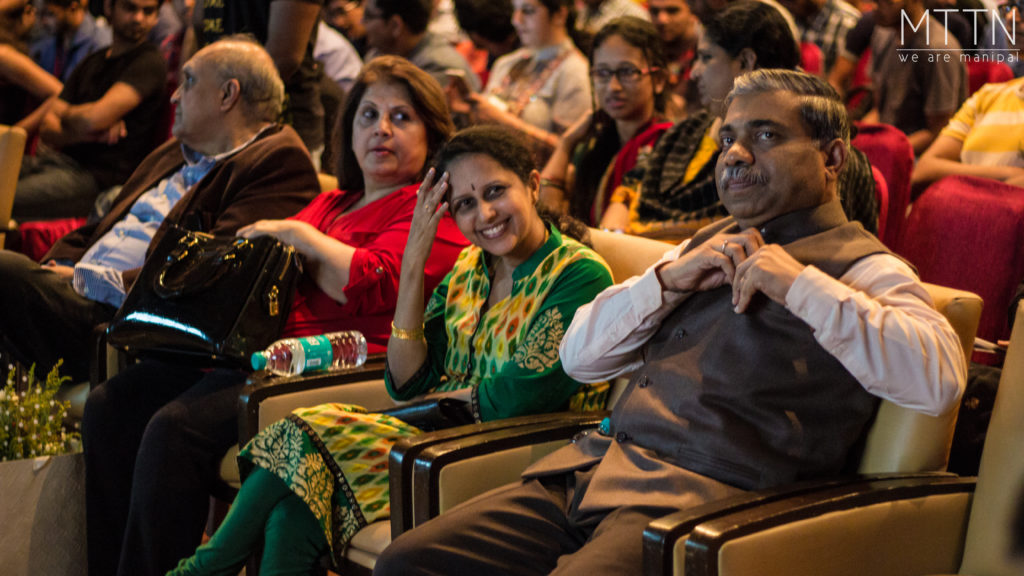
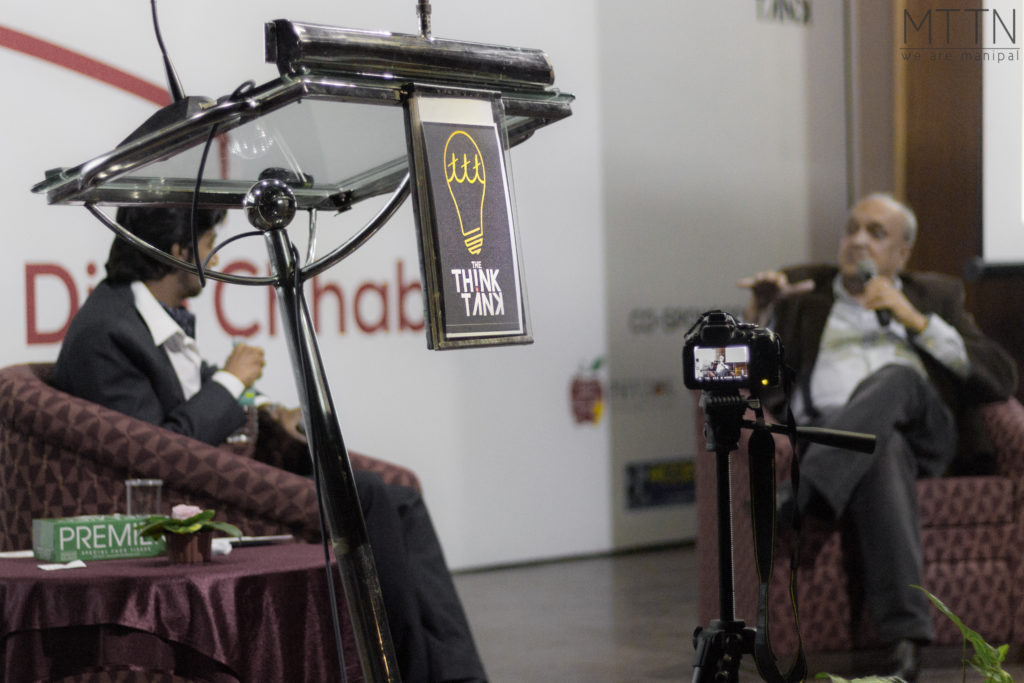
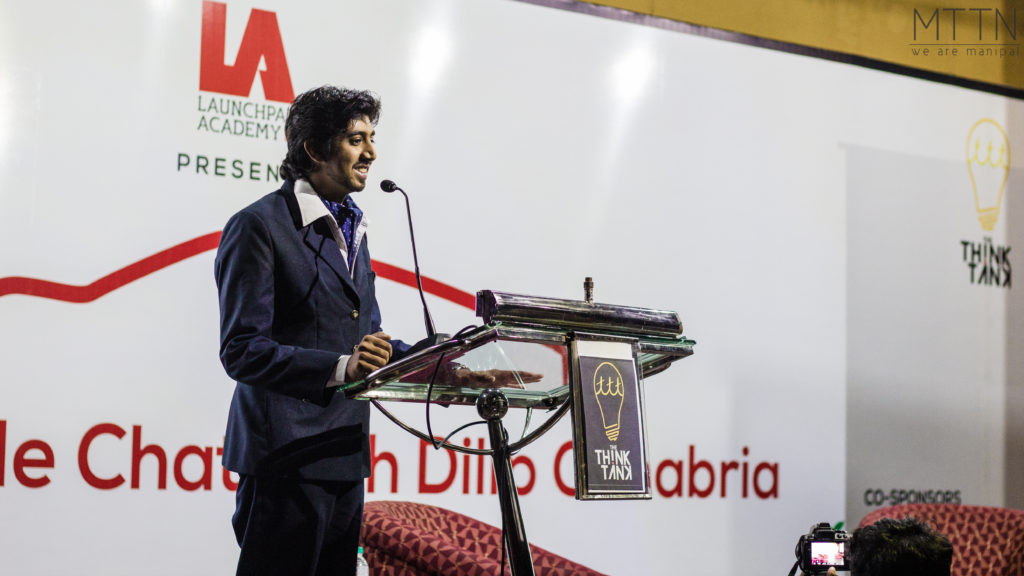
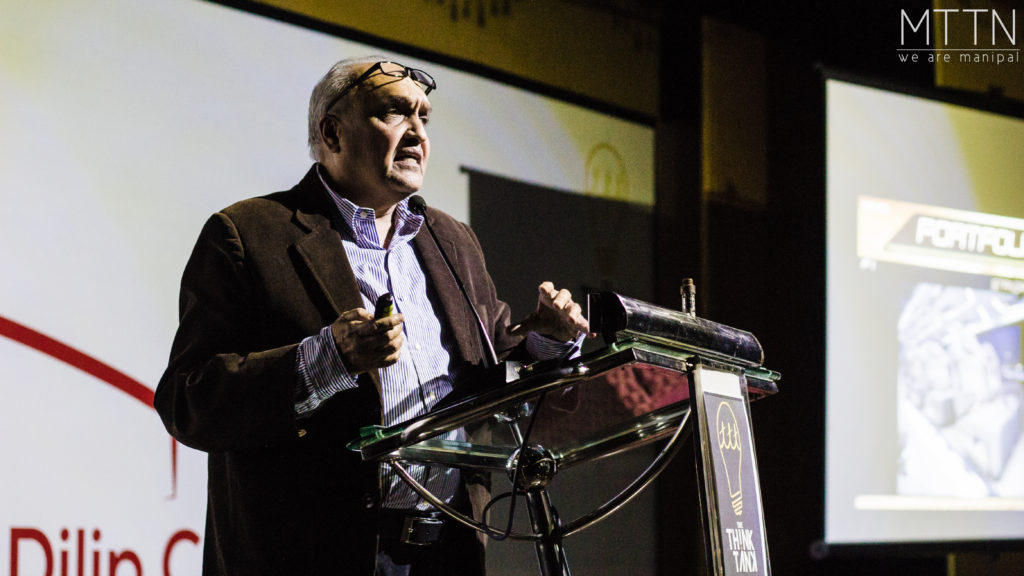
Leave a Reply
You must be logged in to post a comment.